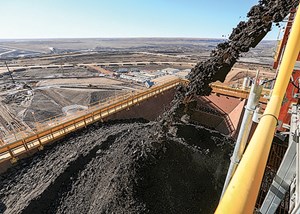Executive viewpoint
All eyes continue to point toward the state of the world’s energy industry, as oil prices remain low on the heels of weakening global economic growth and rising crude oil supplies. Alberta’s oil sands industry may not be immune to this new economic reality.
The oil sands attract $30 billion annually in investment, boast 170 Bbbl of reserves (third in the world) and produce 2.3 MMbpd of raw bitumen (14% of the U.S. daily appetite for crude oil). They are a high-cost industry that has little, if any, access to international markets (beyond North America). Several thousand jobs have been lost, as various oil sands companies have announced significant reductions to their future capital spending plans, in response to lower crude oil prices.
So, it should be to no one’s surprise, if oil sands production falls dramatically in this low-price environment. But will this indeed be the case?
There is more to oil sands than just bitumen. More than half of every barrel of raw bitumen that is produced in Alberta’s oil sands is extracted by large, integrated companies that own their own upgrading and refining facilities throughout North America. This means that a large share of the revenues that Alberta’s oil sands industry generates doesn’t simply come from the sale of processed bitumen. It also comes from the sale of transportation fuels, such as diesel and gasoline.

Even though the price of crude oil has fallen 50% from a year ago, global prices for transportation fuels have bucked the trend of declining crude oil prices. This has enabled integrated oil sands companies to offset their lower upstream earnings with stronger revenues generated by the sale of transportation fuels in the downstream market. Therefore, simply looking solely at the recent fall in the price of crude oil, to determine the economic viability of Alberta’s oil sands industry as a whole, is neither sufficient nor accurate.
Oil sands demand driven by U.S. refinery retrofits. For oil sands projects that are not integrated, some fundamental changes have occurred in the North American refining landscape, and in international heavy crude oil markets, over the past 10 years. These changes have provided a reliable market for Alberta’s oil sands.
Heavy crude oil refining capacity in the U.S., primarily in the Midwestern region, has increased since the early 2000s. This is in response to rising production from Alberta’s oil sands, declining conventional light oil production, and, of course, rising global demand and prices.
By adding additional heavy oil processing units (cokers) to their existing facilities, refineries in the Midwest, such as the Wood River, Whiting and Detroit refineries, could process more of this new, growing production of heavy crude oil from Alberta. In addition, a 1.0-MMbpd decline in crude oil imports from Venezuela and Mexico, into the U.S. Gulf Coast between 2006 and 2014, has also contributed to the rise in demand for Alberta’s oil sands.
Alberta’s oil sands are long-term projects. Alberta’s oil sands investments are long-term in nature, due to their large, up-front capital requirements and slow ramp-up of production. This is in stark contrast to conventional oil and shale oil drilling, which sees large volumes of production within the first year of drilling.
These fundamental differences result in different, expected cash flows over the life of each type of project. A typical oil sands operation will exhibit a steadier stream of cash flows that gradually climbs over time. As such, price fluctuations in the short-term will not have the same immediate effect on oil sands projects, as they would in U.S. light, tight oil or conventional oil projects.
Final thoughts. There is no question that the current, low, crude oil price environment is proving to be a challenge to the global oil and gas industry. Alberta’s oil sands are not immune to this. However, the oil sands do benefit from a diverse revenue base that is generated from the sale of transportation fuels in the downstream market, and also from being able to process bitumen in newly retrofitted refineries throughout North America.
In addition, there also have been a large number of oil sands projects that are already under construction, which will most likely proceed in this low-price environment, due to their long-term strategic focus. The strong momentum of oil sands activity that has been generated over the past decade, from over $200 billion in investments, will most likely ensure that such production will continue to grow into the foreseeable future. ![]()


